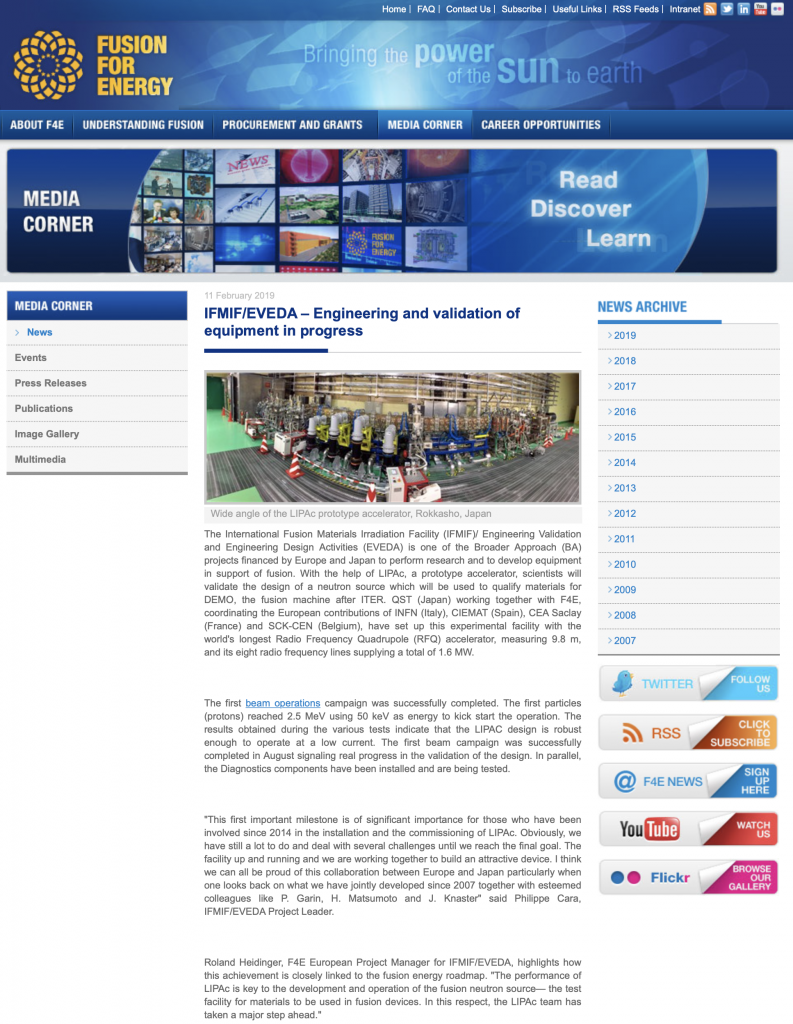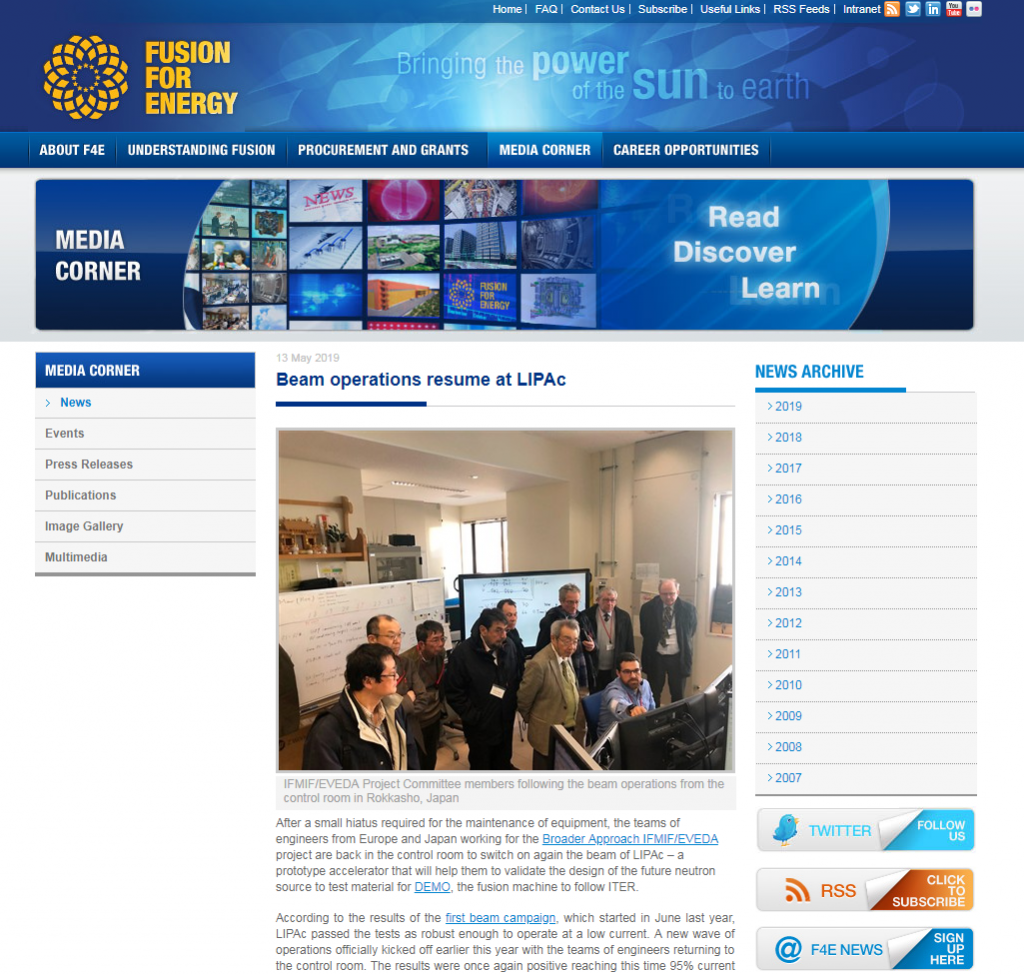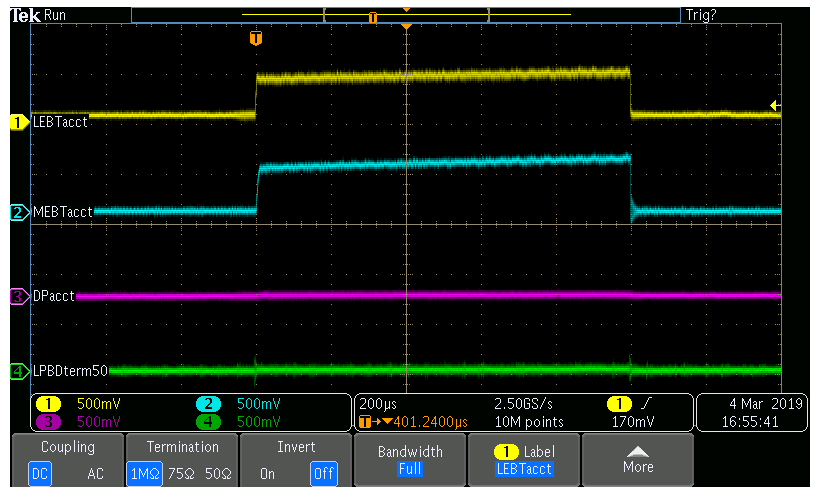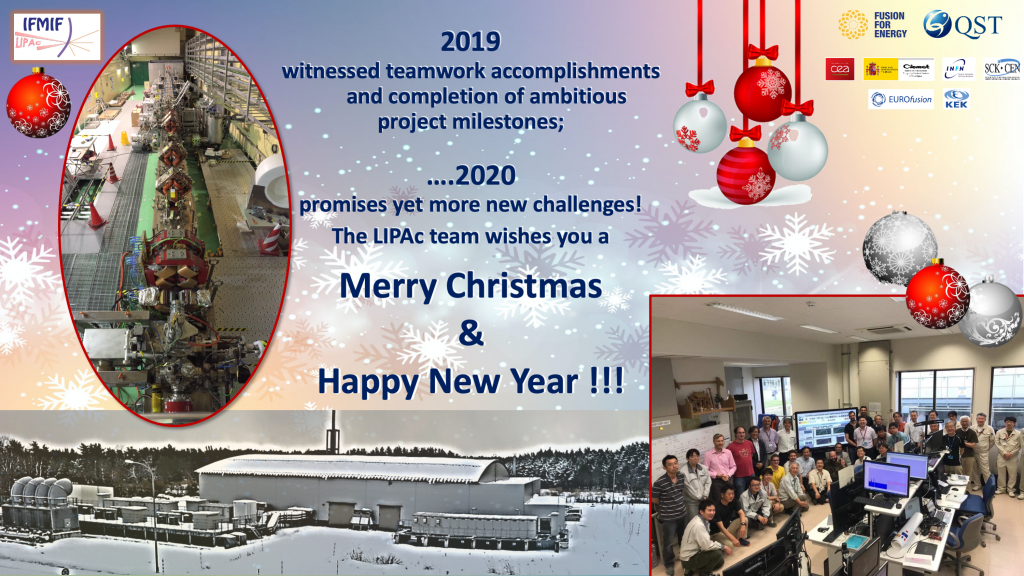
Category: Newsline 2019
Second LIPAc Commissioning and Beam Operation Workshop at QST (Rokkasho)
20, 21 & 22 November 2019
During stop for the scheduled maintenance, a long-planned LIPAc Commissioning and Beam Operation workshop was organized at the Broader Approach Rokkasho site on Nov. 20-22. The workshop gathered again the LIPAc collaboration after the completion of the commissioning Phase B (5 MeV, 125 mA, D+, 0.1% DC, including the commissioning of the RFQ and buncher cavities, as well as a large part of the beam instrumentation).

The LIPAc team has been pleased to welcome Dr. M. Munoz (ESS), Prof. E. Kako (KEK) and Dr. Y. Kondo (J-PARC) to share valuable experience. During 3 days, the accelerator scientists and experts from Japan and Europe exchanged about the operational aspects of the LIPAc:
- Status, results, outcome and achievements of the phase B
- Difficulties and lessons learned from commissioning and operation
- Organization of the LIPAc Unit for operation and maintenance
- Coordination and tools for efficient operation
- Coordination and tools for efficient maintenance
Furthermore, the steps ahead for LIPAc were addressed, including:
- On-going preparation of the beam transport lines for Phase B+ (5 MeV, 125 mA, D+, high duty cycle)
- Detailed definition of the phase B+ Commissioning Plan
- Preparation of the SRF Linac cryomodule assembly
The goal of the workshop is also to strengthen the communication and team spirit among IFMIF/EVEDA collaborators who are geographically distant in Europe and Japan. The conclusions and actions identified by the chairman in each session will be gathered into an action plan.
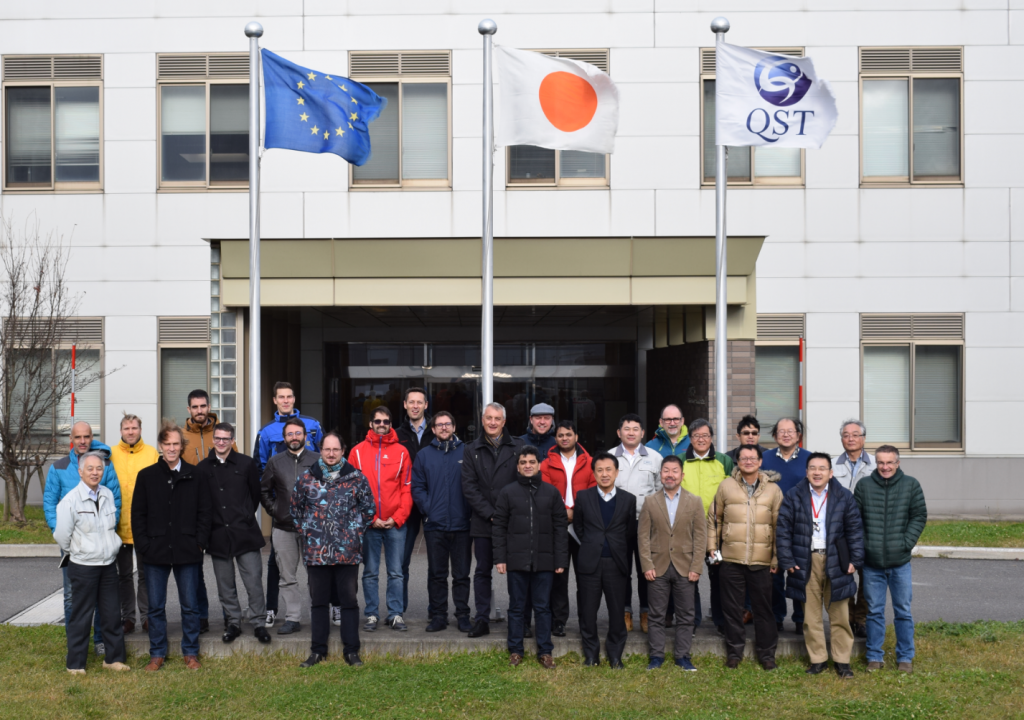
LIPAc maintenance period and High Energy beam line installation
25 September 2019
After the completion of operation corresponding to the phase B, the maintenance activities have started mid of August as planned alongside the preparation of the next phase: phase B+. In this long maintenance period, it is important to carry-out both the curative maintenance of components that were malfunctioning and the preventive maintenance to ensure a better reliability and availability of the systems for the next operation campaigns. The maintenance activities are planned targeting to resume Injector continuous wave operation and Radio-Frequency Quadrupole (RFQ) conditioning before end of 2019, so that LIPAc operation can restart in the second quarter of 2020. In this first period higher priority has therefore been assigned to the Injector and RF/RFQ systems maintenance.

Maintenance activities of the Diagnostics-Plate and of the vacuum systems have also started; maintenance of the Medium-Energy Beam Transport line (MEBT) are planned in December. Specific activities on the beam instrumentation will be carried out in November with EU experts from CEA and INFN on-site. The final beam instrumentation checkout will take place after the installation of the MEBT extension line.
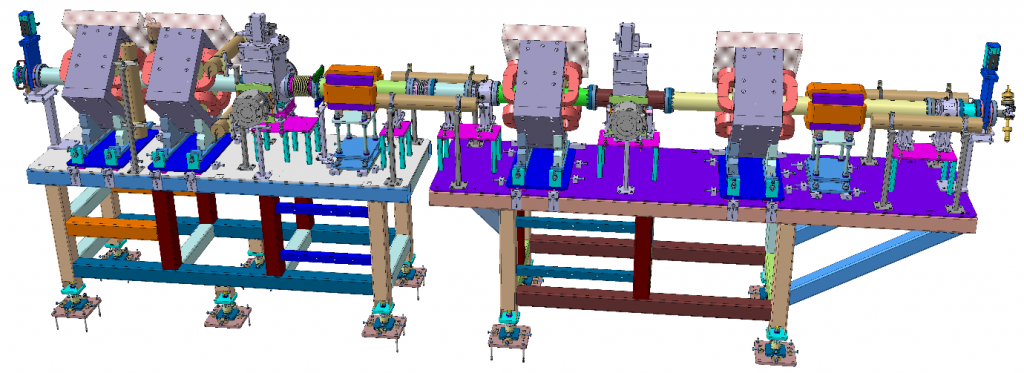
The maintenance of the ancillaries is on-going and many activities have already been completed, such as electrical network distribution, secondary cooling system, Personnel Protection System, Accelerator vault crane. The cryoplant maintenance activities will be carried out in the first quarter of 2020.
The upgrade of LIPAc into its future phase B+ configuration, with its High Energy Beam Transport line (HEBT), is also the goal of this maintenance period. The MEBT extension line has been designed to transport the beam at 5 MeV instead of the cryomodule. It is composed of quadrupoles to focus the beam, steerers to correct its trajectory, Beam Position Monitors to monitor the beam orbit, a vacuum chamber to host a Residual Gas Bunch Length Monitor, Beam Loss Monitors and turbo-pumps for vacuum pumping. The components of the MEBT extension line are currently being procured or manufactured.
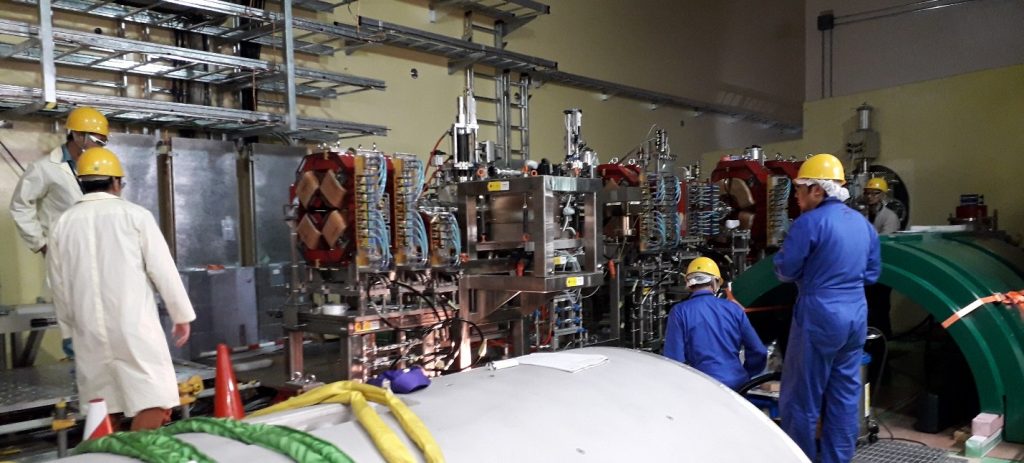
The Low Power Beam Dump which was used during phases A and B will be removed. The HEBT is positioned in its final position together with the Diagnostics Plate, and the LIPAc Beam Dump for full beam energy will be connected to the beam line.
Successful acceleration of a 125 mA deuteron beam @5 MeV in LIPAc!!!
24 July 2019
The deuteron (D+) beam commissioning has been ongoing since two months, and we achieved a 125 mA beam acceleration by the Radio Frequency Quadrupole (RFQ), and transported to the Low Power Beam Dump (LPBD) on the 24th of July, 2019. The data was obtained in pulsed mode operation of ion plasma source with 1 ms length and 1 Hz repetition rate.
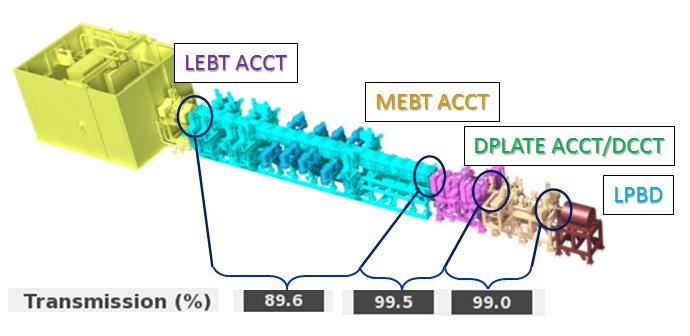
The beam current range was varying from 50 to 140 mA at the entrance of RFQ, and 90% transmission through the RFQ was measured for a maximum current of 125 mA (measurement taken at the end of the beam pulse shape) and for a rated RFQ cavity voltage of 132 kV.
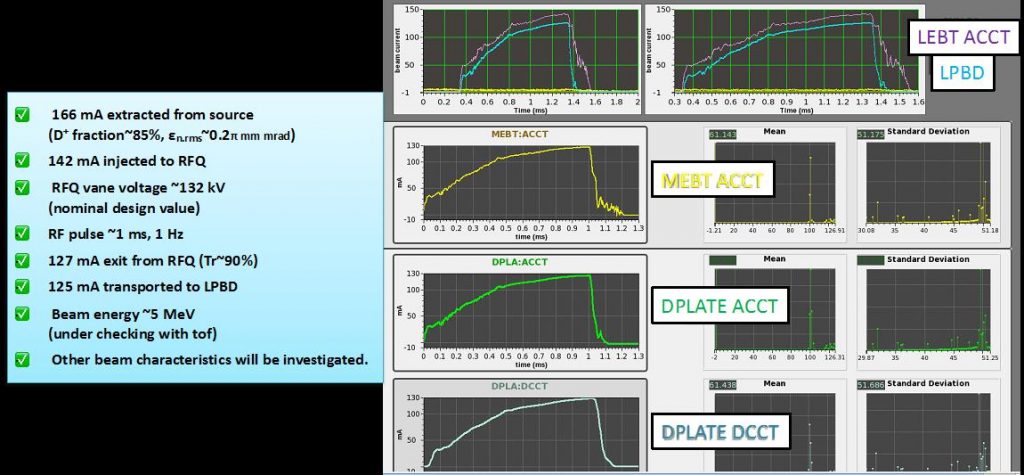
The detail of the accelerated beam characteristics is under investigation and the commissioning phase is still ongoing.
This significant outcome demonstrates that all the components of the LIPAc accelerator in the phase B configuration meet the design requirements. This achievement gives us confidence for the future and the next step toward continuous wave operation at 5 MeV with its high energy beam transport line.
Status Proton Beam Commissioning @2.5 MeV (Phase B1)
25 May 2019
The proton characterization at 2.5 MeV was completed on April 30, 2019 (Phase B1). During this phase, with an extracted current of 88 mA and 300 µs maximum pulse length from the injector, a maximum current of 57 mA was accelerated in the Radio Frequency Quadrupole (RFQ) with a transmission of 93 % through RFQ and beam transport line up to the Low Power Beam Dump (LPBD).
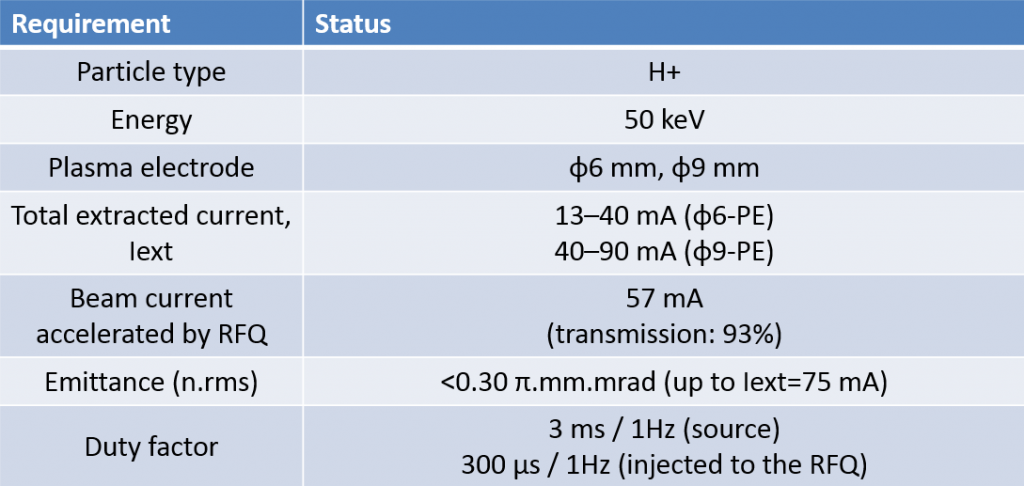
The RFQ was conditioned for proton level operation, which requires a field of about 70 kV to accelerate the protons. In the case of the deuteron operation (next phase B2, and nominal condition of the machine), the cavity needs to be conditioned to reach a maximum field of 142 kV. The conditioning is still on-going to reach that field level with pulses up to 300 µs.
The Beam Instrumentation has also demonstrated to be operational. Further improvements are ongoing which should ease beam operation and allow data analysis with comparison to beam dynamics models.
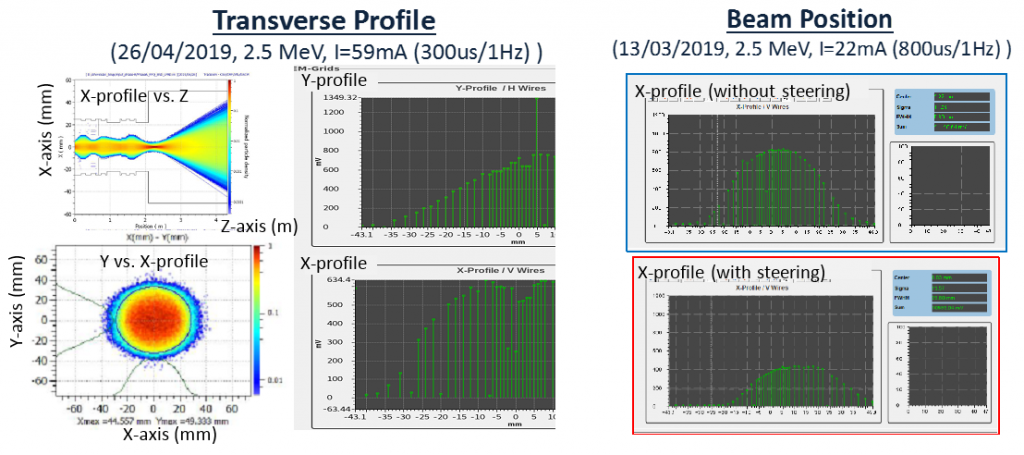
As an example, the above figure on the left shows the measurement of beam profiles, providing the shape of the beam. On the right, the beam position in space is monitored.
Beam operations resume at LIPAc
3 weeks after resuming the operation….
The maintenance period was completed early 2019 and the acceleration of proton beams up to 2.5 MeV was resumed on 20 February. A transmission of 95% through the RFQ was achieved with an input beam current of 7 mA and 0.3 ms pulse length. By using such a beam, the phase tuning of the two bunchers installed in the MEBT was performed successfully. The basic beam diagnostics, beam current monitors (ACCT) and beam position monitors (BPM), were used regularly for beam commissioning, and the beam profile measurement was started by using a non-interceptive device (Fluorescence Profile Monitors) and an interceptive one (Secondary electron emission grid monitors). The latter one is also used to measure the beam emittance with a slit insertion.
IFMIF/EVEDA – Engineering and validation of equipment in progress
Follow the link to access the newsline in F4E website
